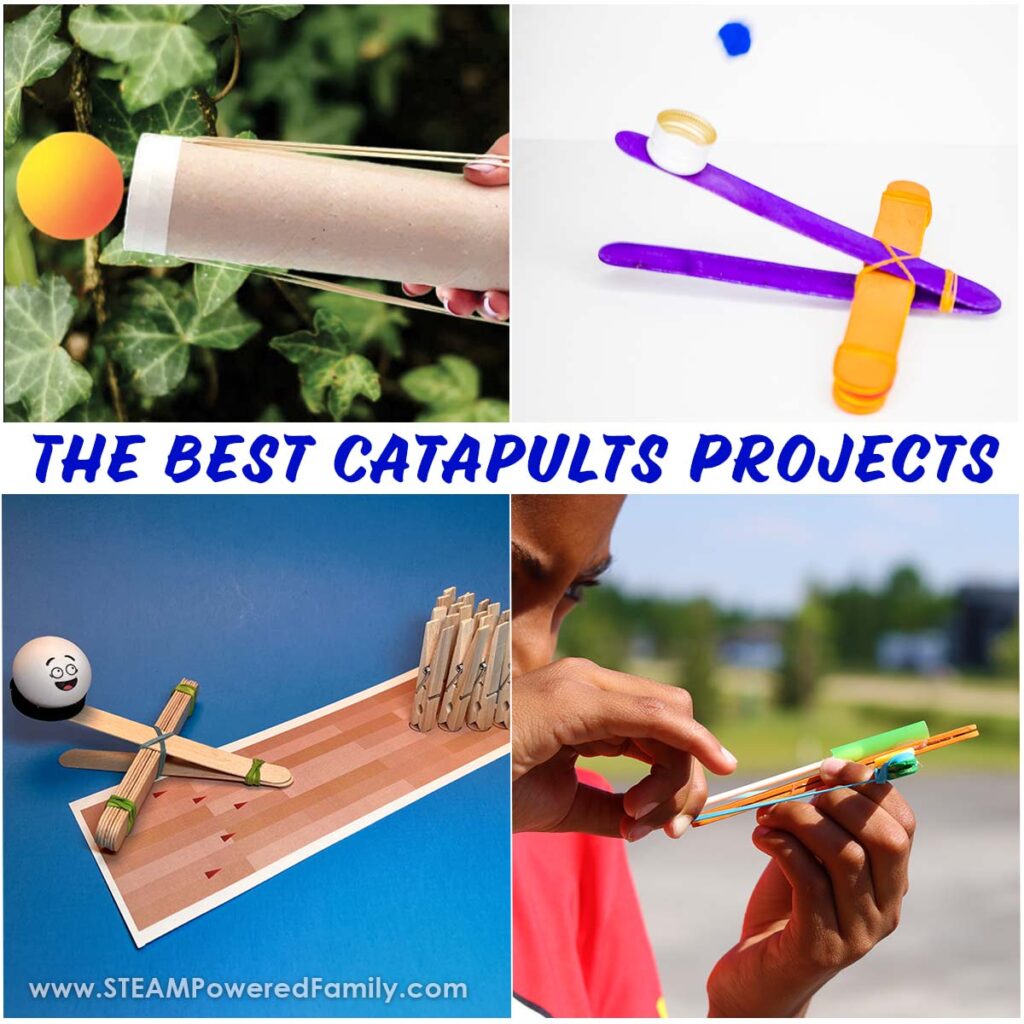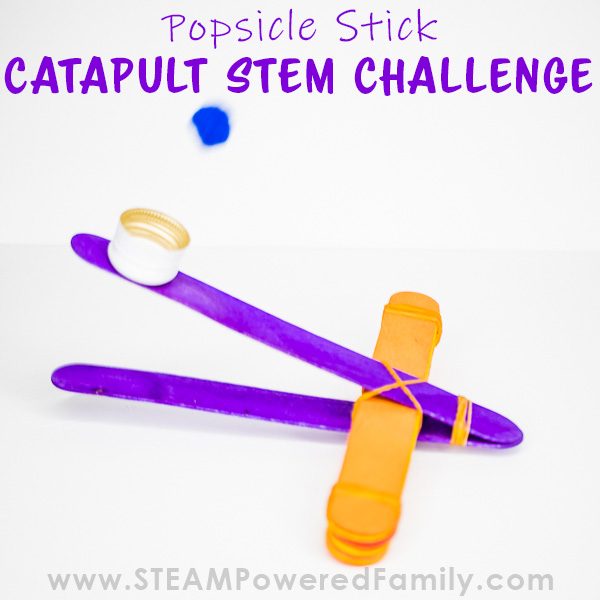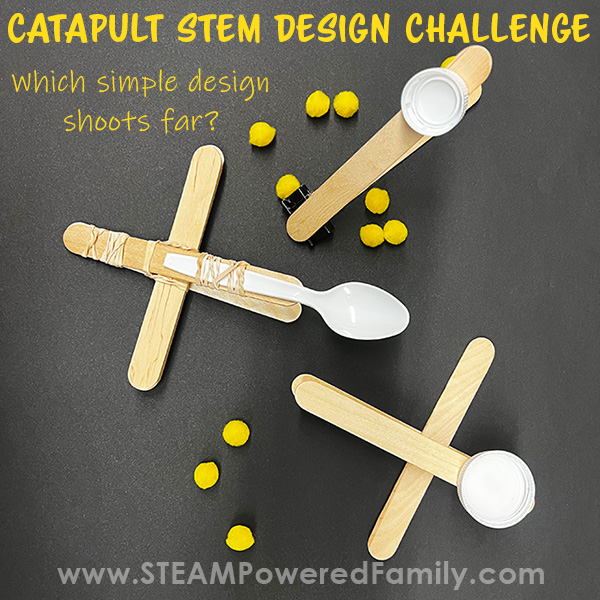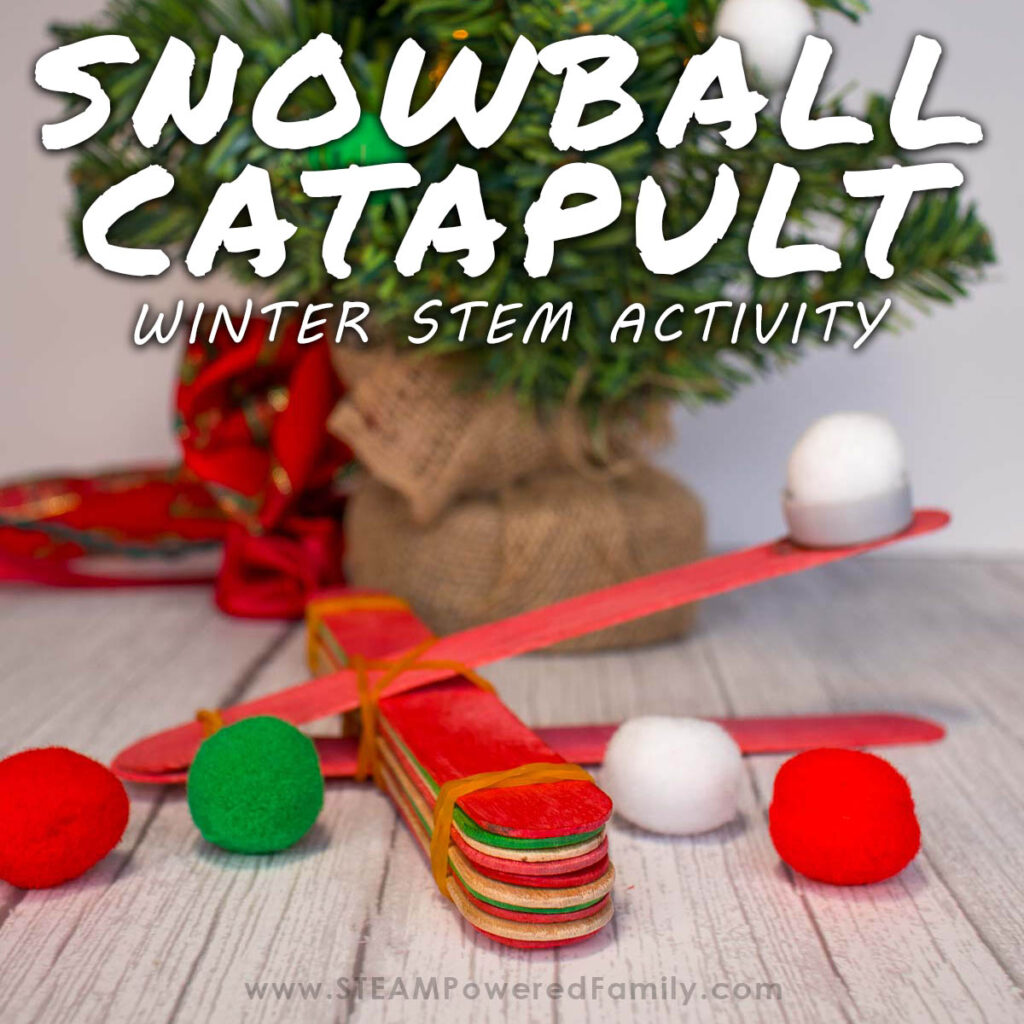The Best Catapults Projects for Kids
When it comes to STEM projects that have stood the test of time, nothing beats building catapults! Catapults have been around for thousands of years, so not only can you use this STEM project to teach engineering, physics and math, you can also teach history. Catapults are also a brilliant way to learn about energy, gravity and Newton’s Laws of Motion. Building catapults is one project every student should do, and today we are talking about catapults plus sharing some of our favourite catapults projects!
Build Your Own Catapults Projects for Kids
Disclaimer: This article may contain commission or affiliate links. As an Amazon Influencer I earn from qualifying purchases.
Not seeing our videos? Turn off any adblockers to ensure our video feed can be seen. Or visit our YouTube channel to see if the video has been uploaded there. We are slowly uploading our archives. Thanks!
The History of Catapults
Before we get to the projects, lets chat a bit about the fascinating history of catapults.
Catapults are fascinating ancient siege weapons that were used to hurl large projectiles (like cannon balls or big rocks) over long distances. The main purpose of these weapons was to break down walls, castle walls, and fortifications or to launch projectiles at enemy troops.
Catapults have been used since ancient times mainly as a tool of warfare, with the earliest recorded use dating back to the 4th century BC in ancient Greece. The ancient Greeks and Romans used a heavy crossbow like weapon known as a ballista to shoot arrows and darts as well as stones at enemy soldiers. They were also used extensively in Europe during the Middle Ages, with many battles being won or lost depending on the effectiveness of the catapults used.
Catapults have also been used in modern times for various purposes, such as launching aircraft from aircraft carriers, launching missiles, and launching unmanned aerial vehicles. Additionally, they are sometimes used for recreational purposes, such as pumpkin chunkin’, where people compete to see who can launch a pumpkin the farthest. Plus, of course, every student loves building catapults!
Catapults are fascinating machines that have played an important role in history and continue to be used in various ways today.
Types of Catapults
There are several types of catapults, but the most common types include the trebuchet, mangonel, and ballista. Trebuchets use a counterweight to hurl projectiles, while mangonels use torsion and tension, and ballistas use tension to launch projectiles. Let’s dig into how these work.
How Does a Catapult Work?
The basic principle behind a catapult is that it uses energy to launch an object through the air. There are several types of catapults, but they all rely on some form of stored energy (known as Potential Energy) to launch a projectile. Once in motion the energy form is known as Kinetic Energy.
The most common types of catapults are the trebuchet, mangonel, and ballista. Each of these machines works in slightly different ways, but they all rely on the principles of potential and kinetic energy.
Trebuchets
Trebuchets use a counterweight to generate the force needed to launch a projectile. The counterweight is attached to one end of a long arm, while the projectile is attached to the other end. When the counterweight is released, it falls to the ground, causing the arm to swing upward and launch the projectile.
Mangonels
Mangonels, on the other hand, use torsion and tension to launch a projectile. They have a long arm with a sling attached to one end and a wooden frame with twisted ropes on the other. The twisted ropes are then released, causing the arm to whip forward and launch the projectile from the sling.
Ballistas
Ballistas are like big crossbows that use tension to launch a projectile. They have two arms that are attached to a frame and a bowstring that is pulled back and held in place by a catch. When the catch is released, the bowstring snaps forward, launching the projectile.
In each of these types of catapults, the stored energy (potential energy) is released, causing the projectile to accelerate and launch through the air. When it motion, the energy becomes kinetic energy. The distance and speed of the projectile depend on factors such as the weight of the projectile, the engineering of the catapult, and the amount of energy stored in the machine.
The Science of Catapults
Making a craft stick catapult with your kids is an excellent way to explore physics principles in a fun way. With these projects we are learning about potential and kinetic energy. When you press down on the catapult you are building tension and potential energy. When you release, it becomes kinetic energy. During this kinetic energy stage, we also see energy transfer as the energy goes from the catapult to the missile. Students will also learn about force and trajectory, as they discover how pressing down on the lever changes the amount of force behind the missile launch, which in turn changes the trajectory, or path the missile takes during flight.
Catapults Projects for Kids
Students making their first catapults usually go with the same simple design, a simple machine called a lever. You push the arm of the catapult down over the fulcrum to build potential energy. When you release the arm it launches the load turning the energy into kinetic energy.
Let’s take a look at some fun catapults projects kids can build.
Popsicle Stick Catapult
Let’s start with a simple catapult that your kids can build quickly and easily. Check out the video of this project on the STEAM Powered Family YouTube Channel.
Simple Ballista Inspired Catapult
My kids called this project a crossbow but it is actually a ballista style catapult project made from craft sticks. Find the video tutorial on our YouTube Channel.
Catapult Design Challenge
In this project, students put the scientific method to work, as they design and compare different catapults to see which one shoots the farthest.
Catapult Cannon
Why build catapults when you can build catapult cannons? This is a more advanced catapults project that launches balls really far! Plus, it provides the opportunity to build a catapult that functions differently from more traditional popsicle stick designs. This design would be more like a Ballista. Watch the tutorial for this project on the STEAM Powered Family YouTube Channel.
Shooting Hoops Basketball Game
This STEM project is perfect for the basketball lovers as we build a catapult powered basketball game. Not only will kids learn valuable STEM skills in engineering, physics and math, but they will also love playing the game and scoring those all important 3 pointers!
Catapult Bowling
This is a fun twist on the traditional catapult project, where students go catapult bowling! Check out the video tutorial of this Catapult Bowling project.
Snowball Catapult – Snowball Fight Catapult Style!
Every year we built snow forts and had snowball fights. It is a fantastic memory! So with this project we are bringing that fun indoors and to everyone, whether you have snow or not. Snowball catapults are easy to make, but pack a powerful physics learning punch!
Valentine’s Day Catapult with Lego Heart Target
Share the love of STEM and catapults with a Valentine’s Day catapult challenge where students try to shoot through a Lego heart. View this project on YouTube.
Halloween Candy Catapult
Candy catapults are an absolute blast and Halloween is the perfect time to build one! Watch the video tutorial of this fun Halloween STEM project on YouTube.
Christmas Tinsel Toss Catapult
Put a fun twist on the way you decorate your treat with a tinsel toss catapult. See the video on YouTube.
Have a blast exploring the world of STEM with catapults!













